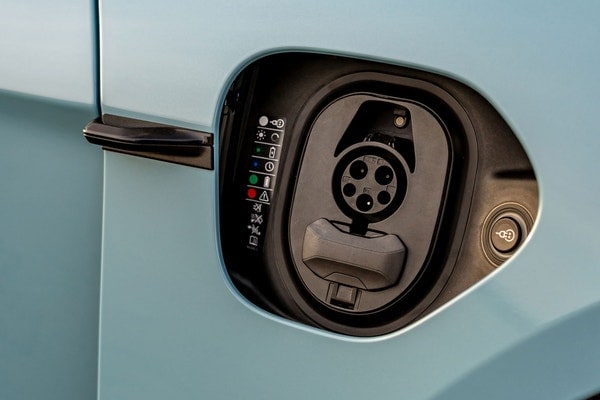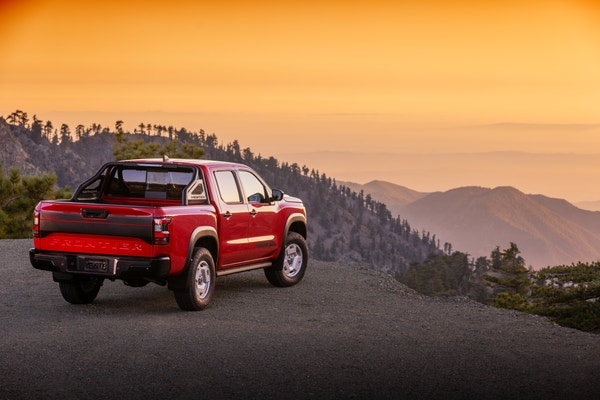Used 2015 Nissan LEAF SL Hatchback Review
Consumer reviews
Read what other owners think about the 2015 Nissan LEAF SL Hatchback.
Most helpful consumer reviews
Surprised it's So Nice
Jerry Roussos, Kissimmee, FL, 11/11/2015
2015 Nissan LEAF SL 4dr Hatchback (electric DD)
We bought our 2015 Leaf SL for an around town car. It's perfect for any trip of 35 miles radius from home (70 miles round trip). When traveling further there are loads of Free charging stations to be found.
Home charging cost is about 2 cents per mile driven based on the local FP&L 10.6 cents/kwh electric cost.
I'm a big guy with a bad back. I looked hard at the Chevy Volt but due … to the lower roof line it was hard for me to get into it without contorting my neck to duck under the roof. The Leaf roof is tall and actually is easier to get into than my Lexus RX450h.
Acceleration is ample and very quiet. It just pulls. In ECO mode the accelerator is remapped to make response pretty dull but acceptable. Turn off the ECO mode and the accelerator is very responsive. ECO doesn't reduce acceleration it just takes more pedal movement to get the same response.
We installed a 240 volt charging station at the house which cost about $500 for the box and $150 for electric installation. It is well worth it. It fully charges the Leaf in about 3 hours vs the 15 hours it takes using the supplied trickle charger.
Without the offered rebates the car would not be one we would have considered. We negotiated a $5,000 dealer discount, A $6,000 Nissan rebate and a $7,500 Federal tax credit so that reduced our real cost to $20,000 for a $38.500 MSRP Loaded SL. Or SL has Bose Stereo, Navigation, Leather etc. We estimate the car will be worth only $10,000 after 5 years but that is not bad considering depreciation after rebates are factored in is only $2,000 per year. Maintenance cost should be minimal since no oil changes etc. The only issue may be battery degradation over time
Fuel (Electric) is costing us about $20 extra a month on our electric bill for 1,000 miles driven. NOT BAD.
The car has a free iPhone or Android APP that allows you to view charging status, battery status and even start the Air Conditioner remotely. In Hot Florida we use the AC remote start up all the time before leaving a restaurant to make sure he the car is cool by the time we get to it.
Update: 20 month of ownership update. It's still our go to car for local trips within a 30 mile radius of home. Range has reduced very slightly due to exoected battery degradation. In 20 months battery and range has degraded 6%, and this is in Florida heat. The only problems so far is the 67 cents CR2025 coin battery in our key fobs needed replaced and a recall on the passenger seat pressure sensor.
Update: after 36 months traded it in on. 2018 Leaf SV. The 2015 was a great car but the 2018 has almost 2x the range due to the larger 40 kWh battery vs the 24 kWh battery in the 2015. . THEN after owning the 2018 for a year I traded it in on a 2019 SL Plus with the 62 kWh battery. These Leafs are great cars.
A Fun car to drive and you save money too! Update!
Jim Mol, Flint, MI, 09/14/2017
2015 Nissan LEAF SL 4dr Hatchback (electric DD)
UPDATE:
Having the car for 7 months now I would like to update a few thing.
Upgraded charging station: Had the electrician run a 220 line to the garage and installed an electric meter in October. Found a Clipper Creek HCS 30 charger on eBay for a 435 and had the electrical hook it up. From October 13 until March 15 we have used 1390 kW for charging and preheating the car.
Winter: … Bought Michelin Ice tires for the winter and they have worked well. We lost a bit of miles per kW, dropping from 3.8 to an average of 3.5. While my wife can drive it to work and back, with side trips, for two days before we charge it, we ended up plugging it in most nights just so it could be warm for her drive to work. Then she just uses the seat and steering wheel heat. On trips across town I used the heat and the energy display tell how much milage you loose - I'd rather be warm.
Electric usage: for the first two months of usage, I tracked how much electricity we used compared to how much gas we would have used. We would have paid 2.5 times more using gas at 22mpg. I saved $108.52. With the meter installed, which includes heating most days this winter, gas would have cost twice as much, saving just under $400.00. Our cost of a kW, including distribution and the like is currently $.15. This savings paid for my Clipper Creek charger and part of the electrical work.
How many miles? In the winter, I figure my wife has about 70 miles. The tires reduce some and she does use the heater for longer trips. Lately it said I have 78 miles. I do not know how it figure this, if it goes on past performance or what. I have been taking the freeway across town at 70 mph over the week end, now I am using to drive my mile to work since my wife is out of town. She has come home several times with the dashes showing . I use SpyLeaf to give us the exact milage they say is remaining.
Charging: The Flint area is dismal for electric cars. Thankfully Consumers Energy has one public charger 3 miles away and down town has two on the university, though I do not know how accessible they are to use. The local Nissan dealer is a mile away from where my wife works so she could away stop in and charge for 20 min if she needed. A trip to the Detroit area would include a stop at the Nissan Tech center for their fast charger: 20 min to 80%. A 20 min walk is nice in the summer.
We greatly enjoy having the car and I alway look for a reason to drive it. If I could find a low battery one dirt cheap, I would use it to drive to work (1.7 mile round trip) and around town.
ORIGINAL REVIEW: If you are looking for a LEAF, do your homework. Figure out how many miles you drive a day to help you decide if this car will work for you. Batteries seem to be a biggest problem after a number of years of use and there are forums for the LEAF that will tell you what to look for and how to check them. It is such a different car, from your internal combustion engine car, that you need to think different. If you want to follow manufacturer recommended service, you take it in every 7500 miles and they check a few things. Every 14,500 miles they change the break fluid. That's it. On my 2015 I figure we have 85 miles to use even though it says we have 110 miles available. That is more than enough to get to work 10 miles away and run errands along the way. We are now charging every other day. The day after we bought it, we had gone 75 miles and still had 20% of the battery left. As it gets cold, expect the milage to go down - part in heating the car and part due to how cold can effect a battery. For us, even if it is cut by half, it would still serve our needs. As with every electric vehicle, this one has a sweet spot: 38 mph. If you could drive that on a nearly level road I have read you can get 134 miles out of it. Meanwhile in the real world, be conservative and decide if the milage it will normally achieve based on the number of bars left on the battery are right for you. If so, get it. If not...your choice. Oh, I didn't rate the safety cause we have not had it over a winter and I do not know what they mean by active safety.
Reliable-No Maintenance-Low operating cost
Andy, Pelham, NY, 11/15/2016
2015 Nissan LEAF SL 4dr Hatchback (electric DD)
We bought this car in Dec of 2015. After 6 years 7 months, and 59K miles, it runs as good as the day I bought it. Since I've had it, it's never broken down. The only maintenance I've done is I put in a new 12-volt battery at the 5-year mark because that tends to be their limit. I also put on a set of winter tires. So far there hasn't been any battery degradation. (There's a bar … indicator on the range gauge). Nissan provides a once-a-year free battery check to maintain the battery warranty which is good for 8 years.
Since we put solar panels on our roof in April 2021, 100% of our electricity has come from the Sun, which of course includes charging the LEAF.
A lot of people that don't know anything about electric cars or the LEAF think it's slow.
The LEAF can easily keep up with traffic, and accelerate quickly into traffic from onramps.
The only shortcoming of this 2015 LEAF is the limited range. For me, it doesn't matter because it's a 2nd car used for errands and I don't need to travel more than 50 miles from home. The new LEAFS and most EVs now have ranges between 200-300 miles and can recharge to 80% from nearly empty in about 15 minutes.
Overall I'm sold on EVs, the low cost from virtually zero maintenance, excellent reliability, free kilowatts from the sun to power it, and excellent performance are a winning combination.
100% Reliability.
Andy, Pelham, NY, 01/28/2022
2015 Nissan LEAF SL 4dr Hatchback (electric DD)
Bought this car in Dec of 2014. Since then I haven't had to do anything besides rotate the tires and add windshield fluid.
This car has completely sold me on EVs. It's fast, quiet, reliable, virtually maintenance-free.
All my future cars will be electric.
Edmunds Summary Review of the 2015 Nissan LEAF SL Hatchback
Pros & Cons
- Pro:Spacious, quiet cabin
- Pro:useful cruising range
- Pro:ample features
- Pro:reliable and available
- Pro:affordable base price.
- Con:Slow acceleration.
Full Edmunds Review: 2015 Nissan LEAF Hatchback
Edmunds Insurance Estimator
The Edmunds TCO® estimated monthly insurance payment for a 2015 Nissan LEAF in Ohio is:
not availableLegal



